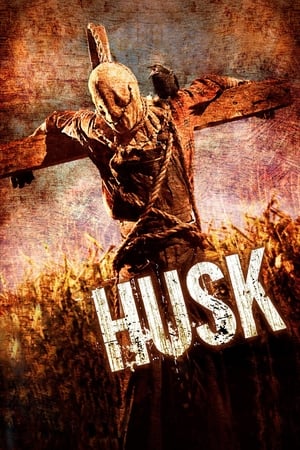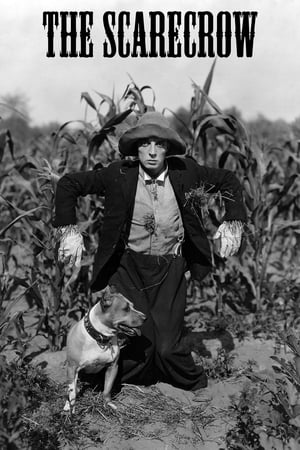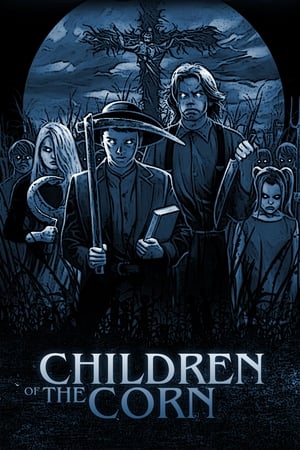‘Husk’ – Digging Up a Scarecrow Horror Hidden Gem
The road to turning Husk into a longer feature was not without its bumps. While Brett Simmons‘ 2005 short film was met with favorable responses at Sundance, there were several upsets before After Dark Films finally entered the picture. The one positive about the years of delays was Simmons then having time to rewrite the screenplay. […]

The road to turning Husk into a longer feature was not without its bumps. While Brett Simmons‘ 2005 short film was met with favorable responses at Sundance, there were several upsets before After Dark Films finally entered the picture. The one positive about the years of delays was Simmons then having time to rewrite the screenplay. Now more to the filmmaker’s liking, the revision delved into those intentionally unexplored parts of the short.
The featurette satisfies as a standalone experience, but it also serves as the proper base product for a more complex narrative. After all, there are enough unanswered questions about Simmons’ compact chiller to warrant an extended visit. The impulse to decry overexplaining in the genre would be in vain here, considering that the fuller Husk still maintains a modest sense of mystery once everything is said and done.
With 2011’s Husk barely breaking the eighty-minute mark, it skips the formal introductions and delivers the inciting incident during the cold open. This car crash out in Nowheresville, USA is the work of a few now-dead and feathery omens, and as a result of that collision, the human survivors are sentenced to a fate worse than death. Launching the story in broad daylight seems to be the opposite of scary, yet as the camera reveals the characters’ immediate surroundings, there is a rising sense of unease to the view. There is not another living soul in sight, and wherever you look, you only see more cornfield.

Pictured: Tammin Sursok meets “Smiley” the Scarecrow in Husk.
This is one of those cases where the characters start off empty, then gradually — and just slightly — get filled in as their situation worsens. Upon first glance though, there is detectable tension in the group, on account of one member’s girlfriend tagging along for what used to sound like a guys-only trip. The short film lacked a female presence, however, as it turns out, Tammin Sursok’s addition here is misleading. By instead keeping Husk focused on its male characters, Simmons is already subverting one big expectation of horror, a genre that frequently protagonizes women.
Mind you, Sursok’s Natalie is not completely wiped from the story once her character meets a quick and surprising end out in the nearby cornfield; even in death, Natalie continues to drive a wedge between Chris (C. J. Thomason) and best friend Brian (Wes Chatham). It is worth noting that Husk winds up being more about an endless haunting than a bid for survival against living and wicked scarecrows. And that is partly because the victims, who are the next in line as opposed to the last, are replaceable components of a ghostly cycle.
With Sursok no longer viable as the hoped-for Final Girl, Husk appoints Devon Graye as the next best thing: a bespectacled observer. The receptive Scott is granted clairvoyant access to the haunted history of this place, namely the past sibling rivalry foreshadowed by a Biblical reference — Genesis 4:11 — from earlier. It is through Scott that we the audience get a better understanding of what happened at this farm and why visitors can never leave.
Simmons’ sinister scarecrows have soaked up their environment, and like in real life, they need humans in order to exist. The expounding of their creation — the supernatural outcome of two brothers (Joshua Skipworth, Nick Toussaint) at odds with one another, hence the Cain and Abel mention — is not required, at least as far as your enjoyment goes. Yet, for the inquisitive types who prefer knowing the origin of evil, fictional or otherwise, Husk quenches their curiosity. The film dishes out details without also being too divulging.

Pictured: Devon Graye’s character watches as Wes Chatham and C. J. Thomason’s characters argue in Husk.
The killer-scarecrow subgenre is neither barren nor oversaturated, and there are a handful of highs to compensate for the many lows. As for Husk, it falls somewhere on the positive end of the spectrum, but much like 1988’s Scarecrows, a benchmark in this unfrequented alcove of horror, it is not just about murderous men of straw aimlessly slashing away and working toward a sizable body-count. As any legitimate scarecrow horror film should, Husk portrays the uncanny relationship between these effigial creatures and the lands they watch over.
The scarecrow has long been a universal source of discomfort, seeing as their natural state stirs thoughts of death. And despite their distinguishing inertness, they appear to know everything about the world around them. This concept of scarecrows possessing omnipresence is unnerving without even adding a malevolent element. Bringing them to life, as one would do in any offering of overt scarecrow horror, is the obvious next step, however, a cold and long glance from one of these dead things is as alarming as witnessing their new-found mobility, if not more so. Husk alternates between both types of scare techniques, although, ultimately, the film favors the dynamic method. There is no need to pretend its monsters are not alive and their would-be prey are unaware. So, vagueness is resolutely thrown out the window early on, but the film still manages to maintain a semblance of fright, due to its creator’s fascination with the scarecrows and their machinations.
Husk, even with its shortage of thematic depth and a cast of static characters, yields a furious ghost story. One that reminds us of the scarecrow’s most important task: to terrify.
Horror contemplates in great detail how young people handle inordinate situations and all of life’s unexpected challenges. While the genre forces characters of every age to face their fears, it is especially interested in how youths might fare in life-or-death scenarios.
The column Young Blood is dedicated to horror stories for and about teenagers, as well as other young folks on the brink of terror.

Pictured: C. J. Thomason is trapped in Husk.




![‘Apocalypse Z: The Beginning of the End’ Is a Thrilling Retelling of a Familiar Story [Review]](https://bloody-disgusting.com/wp-content/uploads/2024/11/apocalypse-z-scaled.jpg)